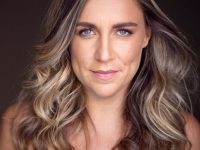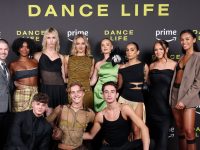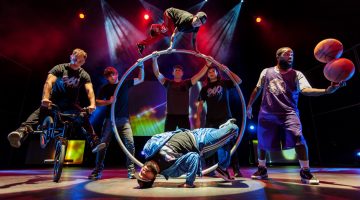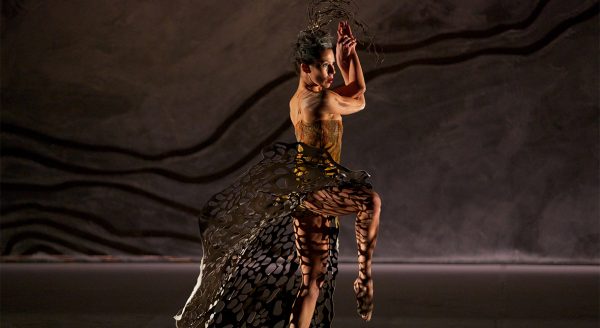
A Time for Reconnecting with Nature and Her Homeland
Iso Interview with Tara Gower
Interviewed by Chris Duncan
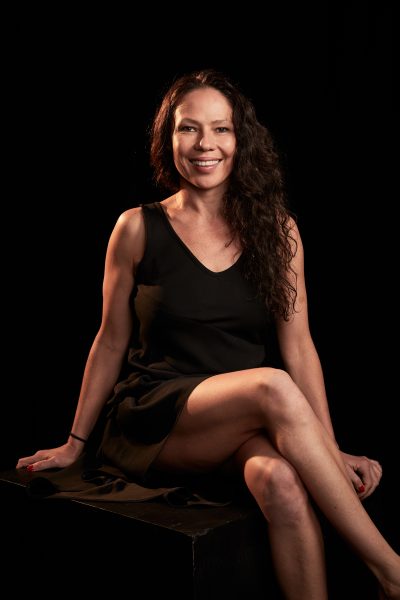
Veteran company member of Bangarra Dance Theatre, Tara Gower is so excited and proud to have been with the acclaimed dance group for 15 years. This Yawuru woman from Broome, Western Australia, set out to make dance her life career because of her passion for her heritage and culture and desire to follow her enthusiastic heart. Tara is a highly educated and accomplished dancer and returned home to her family in WA due to the COVID19 restrictions set in place across the country. Despite missing the physicality of dancing with her colleagues, Tara has found the reconnection with her land and nature in Broome to be grounding and nourishing for her soul. In this interview we get to know Tara and her journey to Bangarra as well as her advice to aspiring dancers, whether indigenous or not.
You can currently watch Tara perform in Bangarra’s Terrain online via their Knowledge Ground, Nandhu digital program. Choreographed by Frances Rings, the Helpmann award-winning Terrain is inspired by the timeless beauty of Kati Thanda (Lake Eyre) in South Australia, and explores the relationship between Indigenous people and Country, and illustrates how landscape can become a second skin. Watch Terrain here.
Chris Duncan spoke with the inspiring Tara Gower recently.
***
Q: Tell me a little bit about yourself, your background, and how dance began for you?
I’m a Yawuru woman from Broome, in Western Australia in the Kimberleys … I’m actually here right now, while this Covid19 isolation uncertainty is happening. Dance began for me in high school, when we were asked to decide on a career and what I would like to do. And I thought about life and I looked at the adults around me … they were working so much. So, observing that, I thought about how would I like to spend most of my time in my life. I wanted to be doing something that I’m most enthusiastic about, and that was dance. So, from then, that was the inspiring moment of doing dance full time. And I guess I just kept doing it!
I started ballet late … did contemporary traditional dance as an 11-year old, and I started with tap and acrobatics and jazz as a seven-year old. So, it was basically that thing of if you don’t stop doing it, you become it. So, we’re all dancers, but I am just a professional dancer because I’ve never stopped doing it, and I will keep doing it. And that’s something I miss right now, actually.
Q: I think everyone in the dance community is missing that actual physical connection …
Yes, I was thinking about that yesterday and how we usually dance for eight hour a day at Bangarra, and I thought about how many hours I actually physically move as opposed to trying to log on and doing the theoretical sides of things. And I realised I need to move or get an adrenalin rush of oxytocin three times a day to keep my mental health stable. So now to suddenly stop doing that and only dance for maybe half that time, I realised I need that endorphin release regularly. I’m doing my own practice once we finish Zoom and then again in the evening, just so I try and keep more balanced. And I’m basically addicted to dance. (Laughter) Make your vocation your vacation!
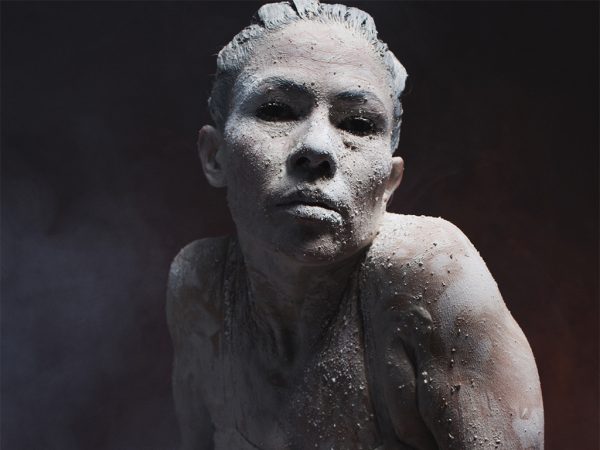 Q: So, what are your oxytocin hits? What do you do to get that throughout the day?
Q: So, what are your oxytocin hits? What do you do to get that throughout the day?
We’re very lucky here in Broome … the beaches haven’t been closed, and it’s one of the highlights of the Kimberley. So, I go to Cable Beach every morning. And I do either yoga, Pilates or laps in the ocean, depending on what the programme is for that day. So, for example, tomorrow I’m teaching the company Pilates. So, I will do my own yoga beforehand, or if we’re doing yoga on Tuesdays, I’ll do my own Pilates in the morning.
It’s about creating that balance. But I’m finding swimming daily is a great energy rush, and especially in the saltwater for extra magnesium and balancing the ions out. There’s something about seeing the horizon line too. So, I’ll finish the day at the beach as well. Just to have that sense of vastness and it can make all your worries disappear, all your thoughts minimalistic, because the horizon line is so magnificent, and you realise you aren’t the centre of the world. It puts your ego into position… its a reality check for your ego.
Q: How did you actually begin with Bangarra? What was your pathway?
I’m very energetic and enthusiastic. I basically surrounded myself with everyone who was available to me, who I knew was connected with Bangarra or was in the indigenous performing arts arena in the city anywhere … either in Perth or Brisbane or Sydney. I started by leaving Broome and going to Perth to attend then I went to WAPPA (Western Australian Performing Arts Academy) to study contemporary indigenous dance there. That’s when I started ballet and I also did my visual arts degree. Then I decided that I would like to immerse myself in the east coast indigenous dance scene because that’s closer to Bangarra. So, I went to NAISDA (National Aboriginal Islander Skills Development Association) Dance College, which combines all different styles of dance, and it’s really great for indigenous dancers from regional areas because they understand the complexities of what that means to move to an urban area. I did two years there, and then I wanted to go into a mainstream institution, so I went to Queensland University of Technology (QUT) and I got my associate degree in dance. And in between that, I went back and finished my visual arts degree at WAPPA. So, I’ve been around!
I researched previous dancers in Bangarra … like Yolande Brown and Victor Bramich … and they went to QUT so I knew that Bangarra as a company had eyes on QUT graduates. I had a feeling it would be a great pathway. And so, every time Bangarra came to Brisbane, I would do classes. And because I was at NAISDA a lot of colleagues in my year at NAISDA were already in Bangarra. I felt like I already knew them. It was through doing those workshops and classes with Bangarra that Stephen Page (Bangarra artistic director) and Frances Rings (Bangarra associate artistic director) got to know me.
We were encouraged at QUT to write a letter to your future employer, as an exercise. So I wrote a letter to Stephen and decided to send it. I was very honest and explained how I wanted to be in Bangarra since I was a teenager and the Aboriginal performing arts scene in Sydney and on the east coast. I basically told him my life story! Good timing was also involved, as a dancer had just left the company so a position was available.
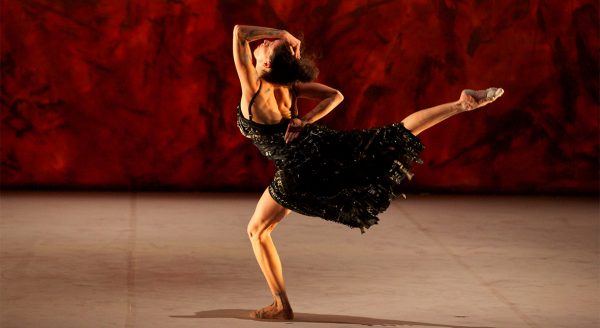 Q: Advice for young indigenous dancers wanting to pursue dance?
Q: Advice for young indigenous dancers wanting to pursue dance?
It’s about getting your face out there. When things return to normal (after COVID19) for aspiring young dancers, it’s about getting your face out there, being confident, and not necessarily having the greatest tendu or plié, or in our case, flex or turned in. It’s about your character as well and being open to learning new things and enthusiastic. Because as soon as you let fear in or become shy or don’t let your colours shine, they will pick up on that. You need to be yourself and just let yourself shine … to blossom! And they will notice that and see it in your movement when you’re doing a class or a workshop.
I’d encourage them not to worry about getting the one, two, three, four … and getting the movement right … but of course, have a framework for it … but really add that extra flair as if you’re doing a show and they will notice that over you getting the exercise correct. Just really just go for it!
Q: There’s been quite a lot of fear around in this period of isolation, how has that translated for you personally?
I think as a dancer, we’re very in touch with our bodies, more so than an average human. So, when I sense a thought that is coated with fear, I can feel it in my body even more so now that I’m not dancing eight hours a day. So, I’m very aware, so if I have an emotional thought and say I feel it in my stomach or I feel it in my heart or my throat, I consciously feed that area with positive energy straight away. So, I’m just finding lately, especially in the last few days, if I feel that fear I will immediately do a yin yang balance and conquer it with positive thought and try to get that feeling out of my stomach or my heart or my throat. It’s just about keeping balance with your thoughts, to avoid fear and use mindfulness and meditation.
Q: Translating that into your dance career, have you found that to be a helpful tool in general or when things have been difficult in your career?
I think that goes back to me being addicted to dance. Bangarra is a very special company, as Australia and the world knows, and to intrinsically feel that is very different to the words that are repeated in the media about Bangarra. So, when we dance, it’s not for movement’s sake at all, it’s about telling our stories from an ancient culture.
And so, when we’re doing what might appear to be a balletic second plié, to us this is an ancient position that is sacred that has been used in Corroborees for years. So, to me, this position isn’t from the outside in, or from the organs in my body, I’ve got to have a turn out here and sync up. It’s very much what people might call spiritual, but I would like to call it ‘Liyan’ … and Liyan is a feeling. So, every time we perform, I would already get into that meditation and that feeling of beyond, and that’s also something I’m missing right now. Dance is healing in that sense, because it wasn’t about a technique, it’s about the Liyan and your body remembers these ancient movements from before.
So people talk about trauma being remembered in your blood, in Aboriginal people … but I also feel the movements, the energy, and the feeling is remembered in my body. So, every time I dance our style, I naturally transcend, and I can only get that feeling now during COVID19 with controlling my thoughts through mindfulness and meditation.
I’m so happy that I followed what I was most enthusiastic about – dance – because it has fulfilled my life mentally and physically. And I’ve only just realised the enormity of it now because of COVID19.
It’s so special what we do, and Bangarra is an urban platform to keep culture and Corroborees alive, and that’s why it’s so important.
Q: As a collective, how are you and the Bangarra dancers keeping that community spirit alive?
I guess we’ve been encouraged to do a lot of things that might help your mental health. We’ve actually been told off for chatting on Zoom! (Laughter) We’re being encouraged to do gardening, so I’ve started a little veggie patch. I’m lucky that I’m at home, on country, so I’m surrounded by my family and I’m doing a lot of research with my grandmother about our history. I wouldn’t have time normally to do this with only three weeks off a year. I’m basically soaking up being surrounded in my country, which is like a blanket for me. And it’s an opportunity to connect with that and when we’re back on stage, that’s the thing that I reference … the feeling of what I have on my country or in town or on the beach or with the family.
Q: It’s great that you are able to reconnect with home, your heritage and the land … it’s actually an unforeseen gift for us all at this time?
Yeah, and I’d like to point out that the land isn’t only important to indigenous people. So many Australians, no matter where you’re from, love the beach or love the horizon line or love the parks and these are the things that I don’t think should be separated. But we should all belong to that and all respect that and this Covid19 time is forcing us to go inside and really think about and reassess what is important to us. And it’s giving nature time to also reboot itself and humans can be like a disease to Mother Earth. And it’s time for us to reassess what we’re doing, and it’s time for us to let Mother Earth rejuvenate.
***

